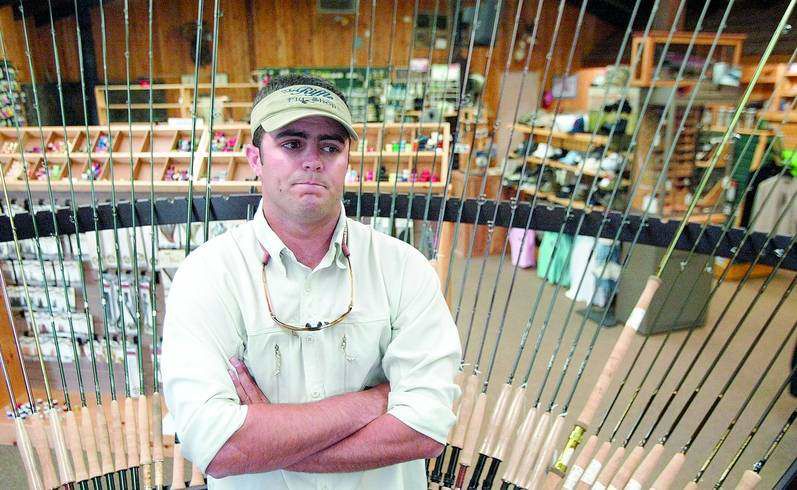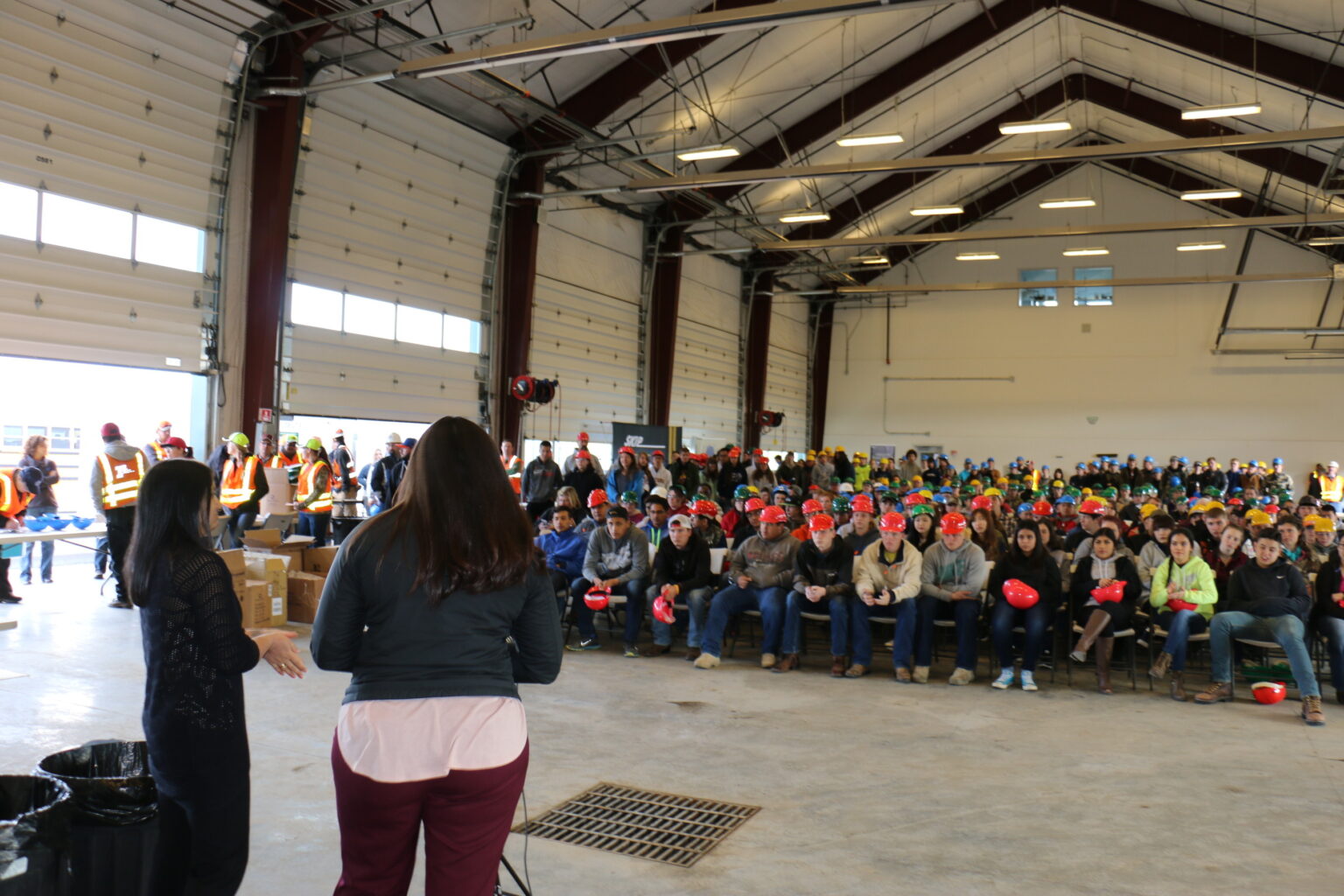Trolling for a permit
Published 5:00 am Sunday, May 28, 2006

- Paul Hansen, co-owner of The Riffle, a fly shop and fishing guide service, said he the limited permits didn't hurt his business too much last summer. But he worries that over time the river will develop a reputation for its complicated permitting process, and people will go elsewhere for recreation.
ast year, the new boater permit system for the lower Deschutes River appeared to be doomed before it even began.
Boaters and rafters griped about having to plan ahead to snag one of a limited number of permits for peak summer weekends. Guides fretted about turning away customers when the permits were sold out.
Then, shortly before the system went into effect, the Web site that sold the permits was shut down by the federal government. It remained out of commission for the entire boating season.
River managers improvised a backup system that sold and distributed permits over the phone and through commercial vendors.
The result? A boating season that actually went more smoothly than guides and river managers expected.
”We went into last year thinking boy, we’re going to get a lot of grief, it’s going to be really tough,” said J.C. Hanff, of the Bureau of Land Management in Prineville. ”And we came back and said, that was pretty easy.”
But river managers and users alike are waiting to evaluate the new system until they’ve seen it in full swing this summer. The system was 13 years in the making and is unlike any other river permit system in the country.
That’s because the Deschutes is using what’s called a ”common pool” permit system. In other words, everyone who floats the river – hobby anglers and professional guides alike – must compete for the same boating permits.
On the Rogue River, in Southern Oregon, for example, peak-season permits are divided among commercial and noncommercial boaters. Guides purchase commercial permits for themselves and their clients. Other boaters must apply for noncommercial permits through a competitive lottery system.
Guides complain that the Deschutes system imposes unfair risks on their businesses, because they have no guarantee how many permits will be available on a given day.
”I think everybody in the country that’s associated with limited entry on rivers is looking at us,” Hanff said. ”There’s an extreme amount of interest, both pro and con, and whether or not it’s going to work on the Lower Deschutes.”
Kreg Lindberg, a professor at Oregon State University-Cascades Campus, is conducting a three-year study to measure how well the permit system works. He’s assessing whether the permits achieve their original goals of protecting the river from overuse. He’s also studying how the permits affect local guiding and outfitting businesses. Preliminary results should be available this fall.
The details
A printed paper pass is required for each person who boats any part of the lower Deschutes River, from the Pelton and Round Butte dams to the mouth at the Columbia River.
Beginning last summer, only a limited number of passes are available for boaters who hit a particular stretch of water between July 1 and Labor Day, on a Friday, Saturday or Sunday.
The Web site that sells the permits was shut down in April 2005, when Department of the Interior officials in Washington, D.C., discovered a potential security flaw. This winter, the site was put under the control of Oregon Parks and Recreation, an agency that co-manages the river with the BLM.
Again this year, the limits affect only a 41-mile stretch of the river, from Warm Springs to Locked Gate.
The limits were imposed as a result of a lawsuit filed in 2003.
This year, a maximum of 550 boaters per day will be allowed from Warm Springs to Locked Gate. The limits will be in effect only from July 1 through Labor Day, on Fridays, Saturdays and Sundays.
The limited daily permits will cost the same as the unlimited ones – $2 per person Monday through Friday, or $8 per person Saturday and Sunday. This year, a one-time transaction fee of about $2 will be added to online purchases. Most vendors who sell the permits in person charge a $3 vendor’s fee.
Limited permits, as well as regular boater passes, are available online at www.boaterpass.com or from local vendors who are listed on that Web site.
A strange year
This summer will be the first time officials strictly enforce that names of boating party members match those on the permits. Last year, the backup system for permit sales didn’t allow boaters to list more than one alternate group member, so officials were lenient.
Boater permits sold out for six days on one section of Segment 1 last summer, and for two days on the other section.
BLM officials said they have no way to count how many people wanted to float the river on those days, but were turned away.
Paul Hansen, co-owner of The Riffle, a fly shop and fishing guide service, said the limited numbers of permits didn’t affect his business much last year.
He estimated that he turned away six to eight groups of people who were looking to float the river but couldn’t get permits.
”One family came over from Portland, showed up on a Friday and could not get on,” he said. ”They were devastated … they camped on the McKenzie or something.”
But Hansen said he worries that the permit system will, in the long term, drive people to recreate on other rivers.
”The confusion – and I would say that’s the word to use – hurt us worse by preventing people from coming to the Deschutes in the first place,” he said.
In other words, the river is gaining a reputation for the hoops people have to jump through before putting a boat on the water.
Mark Malefyt, a fishing guide and owner of The Oasis Resort and Guide Service in Maupin, agreed.
”People just don’t feel real welcomed anymore on the river,” he said.
Maupin’s handful of rafting and fishing outfitters had an OK season last summer, according to Sherry Holliday, a former mayor of the tiny town on the Des-chutes.
”It wasn’t as good as it has been in the past,” she said. ”But it wasn’t as bad as it’s been, either.”
Tribes and guides
An 1855 treaty with the U.S. Government granted the Confederated Tribes of Warm Springs certain rights to the fish and management of the Deschutes River.
Anglers who don’t have special tribal fishing permits, for example, can’t fish on the western bank of the river stretch that borders the Warm Springs Indian Reservation.
But ever since the battle over permits got started, some guides and members of the business community have characterized the new system as a power grab by the tribes. Last summer did little to quell that debate.
”It’s really a political thing,” Malefyt said of the new permit system. ”It has nothing to do with the river, as much as the tribes would love people to believe that.”
But Brian Cunninghame, who works for the tribes, said the permits really are to protect the river, which is an important part of the tribes’ culture.
”It’s not a power struggle in any way shape or form,” he said.
Some guides, like Malefyt, say that overall use of the river has gone down over the last few years, making the permit system unnecessary. Malefyt argues that the BLM’s data doesn’t reflect the number of people who actually float the river.
”Those counts are from boater pass numbers, not actual use. So if your family buys a pass and doesn’t show, you’re still counted as users,” he said.
The BLM’s data shows that river use is actually on the rise. Use has, however, become less concentrated on the weekends and has instead been spread out throughout the week. According to Cunninghame, that was the intent of the system.
”This was a multiagency plan that was developed with full participation of the guide community,” he said of the 1993 agreement. ”All the tribes are trying to do is keep those folks honest by making sure they live up to their commitments just like we do.”
Understand the system
Bobby Brunoe, manager of the tribes’ natural resources department, is overseeing a study to determine why populations of chinook salmon that used to spawn upriver from Sherars Falls have instead spawned below the falls in the last several years.
One theory is that the crowds of people enjoying the river above the falls have displaced the salmon.
”Basically, the problem we have is with the heavy traffic,” Brunoe said. ”There’s trash, you know, that’s gone in the river. There’s always the concern about protecting (fish spawning sites) from people walking on them or anchoring on them. We’ve observed people harassing fish in the fish ladder at Sherars Falls.”
Fish have a keen sense of smell, Brunoe added. They can actually smell when a person has been in the water and may choose to spawn elsewhere.
Even if humans are determined to be the cause for the fish populations’ move, it remains to be seen whether a limited-entry permit system helps.
The area upstream from Sherars Falls is part of Segment 2 of the river. That segment – a popular destination for whitewater rafters – has a much higher use limit, and is not headed toward a limited-entry system anytime soon, said Tom Mottl, of the BLM.
Warren Snyder, a Redmond resident, said he understands the reasons behind the limited-entry system. After 14 years of heavily fishing the Deschutes, he has all but stopped floating Segment 1 of the river.
”What it reminds me of is, Warm Springs is a bus stop,” he said. ”They get in their driftboat and they fish the same spots over and over and over again. One boat pulls out and the next boat pulls in.”
Snyder said that when he’s on that segment of the river, he sees fish who are missing eyes and have damaged gills from being caught and released so many times.
He would like to see the managing agencies improve other types of access to the river. If anglers could reach more of the river by foot, he said, fewer would float that single stretch of river.
Snyder also said he is puzzled why limits have been imposed on Segment 1, though use in Segment 2 is much higher.
”I don’t think you’re ever going to be able to reduce the impacts to soil, water and vegetation without limiting entry to Segments 2 and 3,” he said.
Dennis Oliphant, president of Sun Country Tours, a rafting company, said he expects river use to rise with Oregon’s population growth.
Still, Oliphant said the permit system is just one of many factors that could determine if and when people flock to the Deschutes for a float trip this summer.
”Take the gas prices this year,” he said, offering another possible factor. ”Is it going to drive more people to the river because they’re not going to take the long, Disney Land vacation? Or is it going to bring less people because they don’t want to spend $30 to drive to Central Oregon? I just don’t know.”
The permit system, now in its second year, applies:
Where: On the lower Deschutes River between Warm Springs and Locked Gate.
When: Fridays, Saturdays and Sundays between July 1 and Labor Day.
How much: $2 per person Monday through Friday; $8 per person Saturday and Sunday. A vendor or transaction fee of $2-$3 may apply.
How: Visit www.boaterpass.com to find more information or to buy a boater pass.








